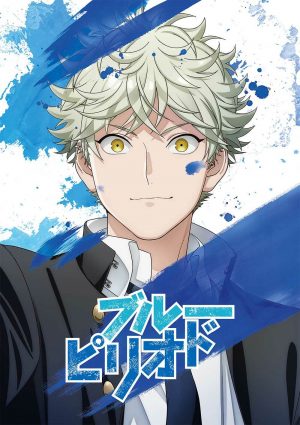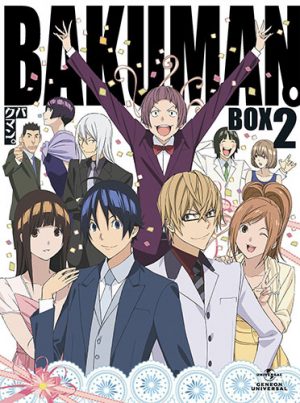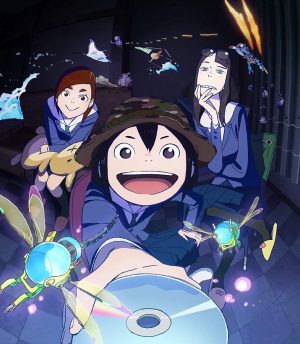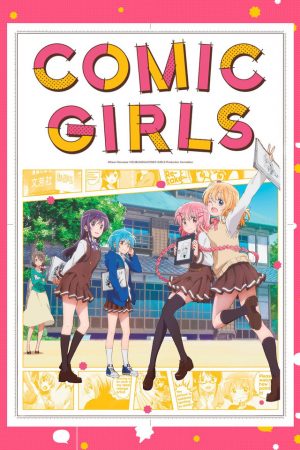6 Anime Like Blue Period [Recommendations]


Blue Period has taken the anime community by storm this season with its interesting premise, thematic depth, and honest portrayal of a person’s artistic journey. To be frank, there aren’t many shows out there that hit exactly the same notes that Blue Period has been hitting in the way that it has, but the idea of an anime series being a love letter to a particular form of artistic expression is by no means new. We see this in anime all the time: series basing their entire premise on a particular activity or passion of the characters, but also giving us incredible characters, drama, and more! All that being said, let’s get into the passion and bring up 6 anime that are passionate about a particular form of expression in the ways that Blue Period is!
Similar Anime to Blue Period
1. Bakuman

Mashiro Moritaka used to dream of becoming a mangaka like his uncle, Kawaguchi Taro; however, he’s long abandoned those childish desires. Now a high schooler, Moritaka struggles with planning his future, but things change after a conversation with Takagi Akito, the top student in his class. One day, Takagi finds Moritaka’s notebook after class and is thoroughly impressed with his artistic ability. In fact, he’s so impressed, he tells Moritaka all about his dream to one day become a famous mangaka, but he unfortunately lacks the artistic talent to support such ambitions. Takagi tries to convince Moritaka to pair up with him to achieve that dream, but he’s only convinced when it’s revealed that Moritaka’s long-time crush, Azuki Miho, has aspirations of one day becoming the voice of the heroine of the anime adaptation of a major manga series. Never having spoken to each other before, the first conversation Moritaka and Miho have is an interesting agreement. Should Moritaka and Takagi succeed in becoming the most successful mangaka in Japan, and Miho succeed in her dream of becoming the voice actress of the heroine of the most popular anime title, then Moritaka and Miho will get married! The major similarity between Blue Period and Bakuman lies in the fact that they’re both about art in some capacity. While Blue Period focuses on art as a passion and a discipline, Bakuman is strictly about manga art. Both sets of main characters aspire towards a particular goal in an artistic field: Yatora wants to get into Tokyo Art University, while Moritaka and Takagi aspire to become the best mangaka in Japan. Both anime are highly emotional love letters to art, either in its entirety or in a specific format. The sense that the series are both passionate forays into the various kinds of journeys people experience when it comes to using visual art as a means of self-expression, but also how they grow and change as a result.
Bakuman Trailer
2. Shirobako

Five high school friends discovered their love for anime and formed an animation club at their school. After creating and showcasing their first ever anime production at their school’s culture festival, Miyamori Aoi, Yasuhara Ema, Imai Midori, Sakaki Shizuka, and Toudou Misa promise each other that they will find jobs in the animation industry and work towards creating their very own anime. Nearly three years after they graduated high school, Ema and Aoi have snagged jobs at Musashino Animation, but can’t seem to get the exact jobs they want. The rest of their friends are dissatisfied with their own circumstances; with Shizuka’s voice acting talent going underappreciated in the industry, Misa finding a secure yet soul-rending job making 3D renders for a car company, and Midori still in university working towards her goal of becoming a writer. Not quite where the five girls saw themselves ending up at the end of high school, but they have to push on if they ever want to achieve their collective and individual life goals. Unlike Blue Period, Shirobako is not about art, but there are some huge similarities between these shows regardless. For one, the concept of an anime being a love letter to a particular activity or in this case, a particular industry and medium, is shared by both Blue Period and Shirobako. Another similarity is the theme of achieving one’s dreams and the discovery of that about which one is passionate. In Blue Period, Yatora is a high schooler when he develops the beauty and vulnerability of being a visual artist, while Shirobako’s five besties are high schoolers when they dream of creating their own television anime. Both shows address the feelings that come with the territory of working towards something that one deems to be important for their personal journeys. Both Shirobako and Blue Period are anime that communicate the difficulties and also the triumphs of daring to aspire to something in different but very profound ways nonetheless.
Shirobako Trailer
3. Showa Genroku Rakugo Shinju (Descending Stories: Showa Genroku Rakugo Shinju)

Rakugo is a traditional Japanese storytelling art known for its comedy. Yotarou is a former gangster who has just been released from prison and is itching to turn over a new leaf. During his sentence, he was greatly moved by a rakugo performance by the famous practitioner Yuurakutei Yakumo and set out to one day meet this man. Despite not being interested in taking on an apprentice at first, Yakumo finds himself accepting Yotarou’s sincere request to be tutored in the art of rakugo, but he won’t make it easy! Despite learning under Yakumo, Yotarou finds himself attracted to the rakugo style of Yuurakutei Sukeroku, who was Yakumo’s greatest rival before he passed away. The youngster’s attraction to Sukeroku’s rakugo stirs up old memories for Yakumo, who also happens to be in the care of Sukeroku’s daughter, Konatsu. Through rakugo, Yotarou seeks to make something of himself and keep alive a traditional art threatened by the passage of time; one which saved his very own life. Like Blue Period, Showa Genroku Rakugo Shinju is a love letter to a particular form of artistic expression. In this case, it’s rakugo, the traditional Japanese storytelling art with a rich history. In both Blue Period and Rakugo Shinju, the protagonist begins as an everyman who is profoundly affected by an encounter with someone’s art. This sets into motion a series of events that lead to the protagonist aspiring towards also being able to express themselves through that medium. For both Yatora and Yotarou, art is the thing rescuing them from themselves, but also helping them grow into and eventually accept themselves. While Rakugo Shinju is specifically about the art of rakugo, the emphasis on characters and their relationships and the prioritization of the conveyal of emotions makes these two very similar.
Showa Genroku Rakugo Shinjuu PV
[ad_middle]
Any Anime Like Blue Period?
4. Eizouken ni Te wo Dasu na! (Keep Your Hands Off Eizouken!)

Asakusa Midori has a very active imagination. Armed with her trusty sketchbook and keen observational abilities, Midori draws beautifully detailed landscapes of the world around her, and the one within the bounds of her own mind. Her best friend, Kanamori Sayaka, is her polar opposite, dwelling mostly in the realms of logic and reality. One day, they bail model Mizusaki Tsubame out of a sticky situation with one of her bodyguards, and an almost-instantaneous friendship blossoms between Midori and Tsubame, who shares the former’s passion for art and animation. There’s one small difference in their approach; however: Midori excels at putting detailed landscapes and background settings to paper, while Tsubame is better at drawing people. Noticing the immense talent before her, the calculating Kanamori suggests that they start an animation club disguised as a film club because their school already has an anime club, and from that day on, the three work on creating their very own animations! This series gets hailed as a love letter to animation, and that sentiment will be repeated here. The main characters’ passion is evident in their very characterization, and the series itself gives much of itself towards creative explorations of animation and art. As a result, we not only get compelling characters that we want to root for, but we also get to see what they see before they’ve even made it, and some of the best scenes are Midori’s mental forays into a specific background design or landscape. The aforementioned aspects are the main reasons why Eizouken and Blue Period are not only similar but both highly ambitious and successful anime series. The characters are absolute nerds for their specific art form or medium, and they have the drive and talent to back it up, and that’s similar to the addiction to artistic expression Yatora experiences early on in Blue Period. These shows also give us something to really ponder as far as sensitive topics like sexuality and gender expression, albeit in different ways.
Eizouken ni Te wo Dasu na! (Keep Your Hands Off Eizouken!) PV
5. Arte

16th century Florence. During Europe’s Renaissance Arc, uh, period, a young woman born to an aristocratic family dreams of becoming an artist. However, when Arte’s father dies, she loses her only cheerleader in her goal of becoming an artist, so now her life is being laid out for her. She’s expected to marry a noble and live as a housewife until her death; however, Arte isn’t ready to be resigned to such a fate, so she sets out to look for an artisan who’ll take her on as an apprentice. Easier said than done; however, as the misogyny of 16th century Florence rears its ugly head and various capable artisans turn her away because she’s a woman. However, things turn around when a famous artisan named Leo allows her to become his first and only apprentice! We’ll try really hard not to make any bad puns here, but the main similarity between Arte and Blue Period is, well… art. Both stories are about people who are passionate about art and seek to make something of themselves in the world of artists but face their own unique challenges in that regard. While Yatora eventually discovers his passion for art, Arte burns with a desire to become an artist from a very young age, but both characters put themselves through all kinds of hardship in order to develop their abilities and succeed. Both Blue Period and Arte also have in common a kind of narrative about art that prioritizes the emotional rather than the technical.
Arte PV
6. Comic Girls

Moeta Kaoruko (pen name: “Chaos”) is a young mangaka struggling to make an impression because her storyboards are dull and her premises fail to pique any interest in her editor. Her editor suggests that Chaos put herself out there more and socialize, in hopes that the exercise would prove to give Chaos a sense of how things happen in reality and draw inspiration from that. She moves into a dorm for female mangaka where she meets a host of quirky artists; like Katsuki Tsukasa who draws Shounen manga, eromanga artist Irokawa Ruki, and Koizuki Koyume, a fellow Shoujo mangaka. Now that Chaos has taken the first step, will she be able to draw the kind of inspiration that will give her work the kind of oomph it needs? We’ll have to see! Like Bakuman, Comic Girls is similar to Blue Period because it is a foray into a particular kind of artistic expression. Manga is a sub-trope of the overarching art that we’ve seen in Blue Period, and while it’s not exactly a love letter to either art or manga, Comic Girls features characters aspiring to achieve something within a visual art medium and they, much like Yatora, have to overcome their feelings of inferiority and uncertainty. Comic Girls also overtly emphasizes similar messages to Blue Period surrounding the relationship between art and artist, artist and their surroundings, as well as the link between healthy support systems and social circles being the glue that holds people together and even inspires them to want to achieve something for themselves. Unlike Blue Period; however, Comic Girls is extremely light-hearted and rather moe too, so it’s not as deeply introspective as Blue Period has proven to be.
Comic Girls PV

Final Thoughts
Now that it is over, we can look back fondly on the beautiful story that Blue Period has been over the course of the Fall season! After a story like that, you’re left feeling a lot of different feelings, but we can agree that this was an absolute ride and anything similar in feel or thematic composition to Blue Period will definitely go down well! What other anime similar to Blue Period can you think of? Drop a comment below and show off your knowledge of introspective, artsy anime that are honest forays into the media they pay homage to; or just tell us which of our six you’ll be watching next!
[recommendedPost post_id='345797' url='' title='' img='' class='' widget_title=''] [recommendedPost post_id='345415' url='' title='' img='' class='' widget_title=''] [recommendedPost post_id='345404' url='' title='' img='' class='' widget_title=''] [recommendedPost post_id='342658' url='' title='' img='' class='' widget_title=''] [recommendedPost post_id='346712' url='' title='' img='' class='' widget_title='']

No comments